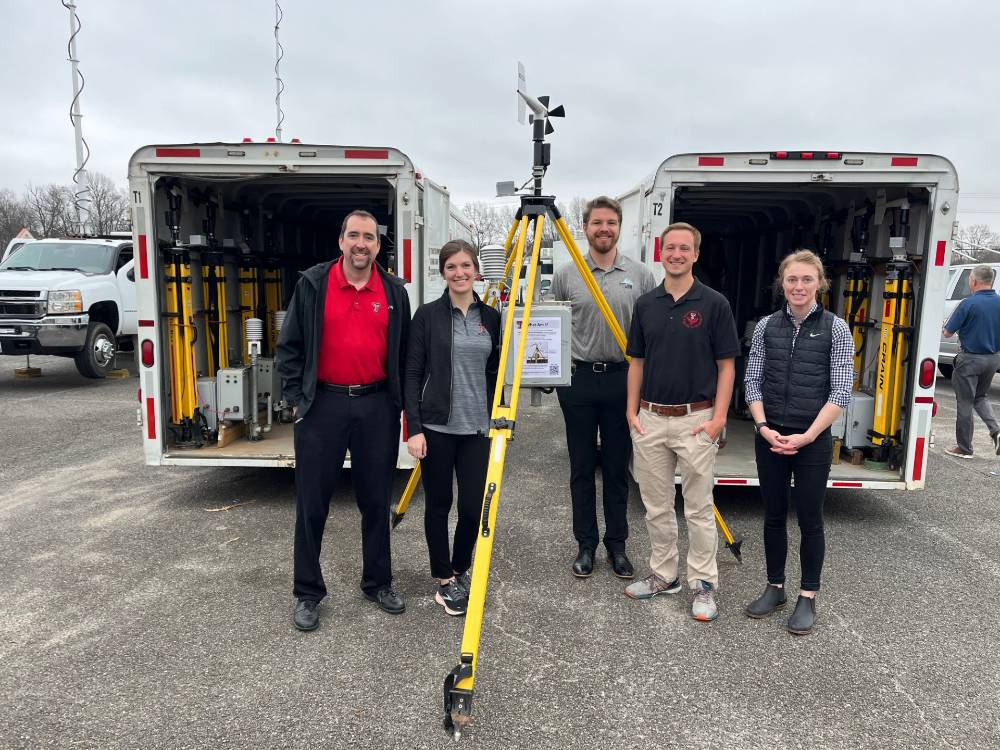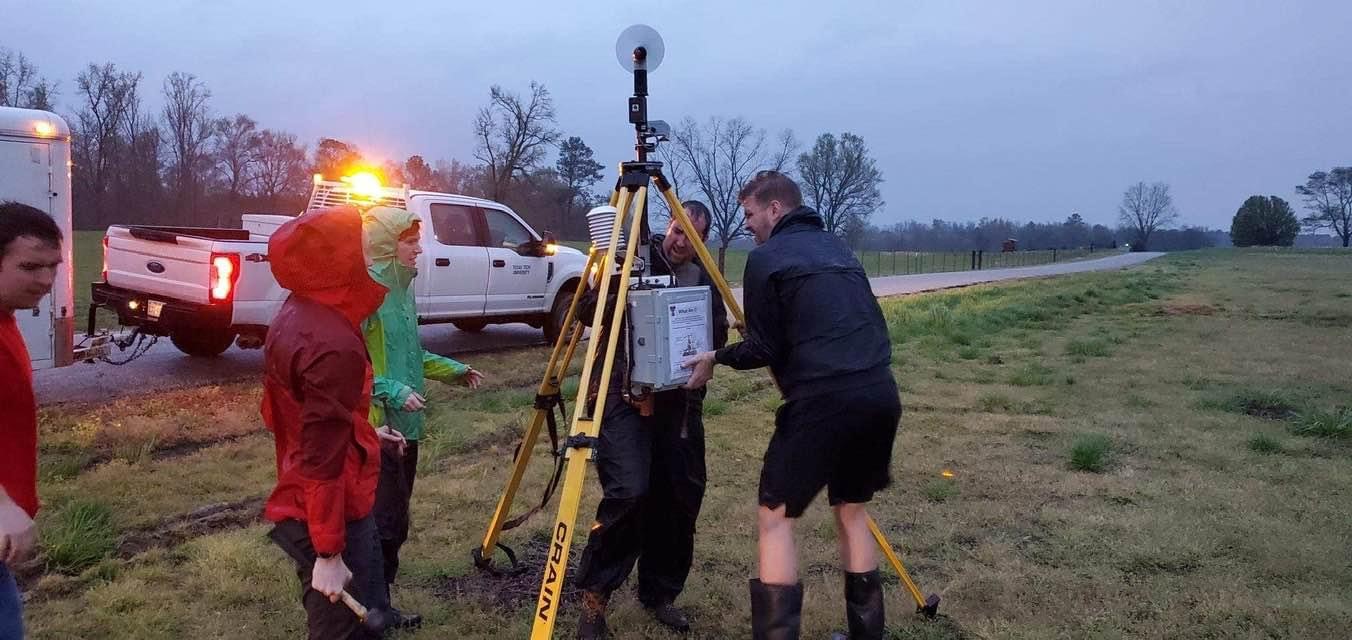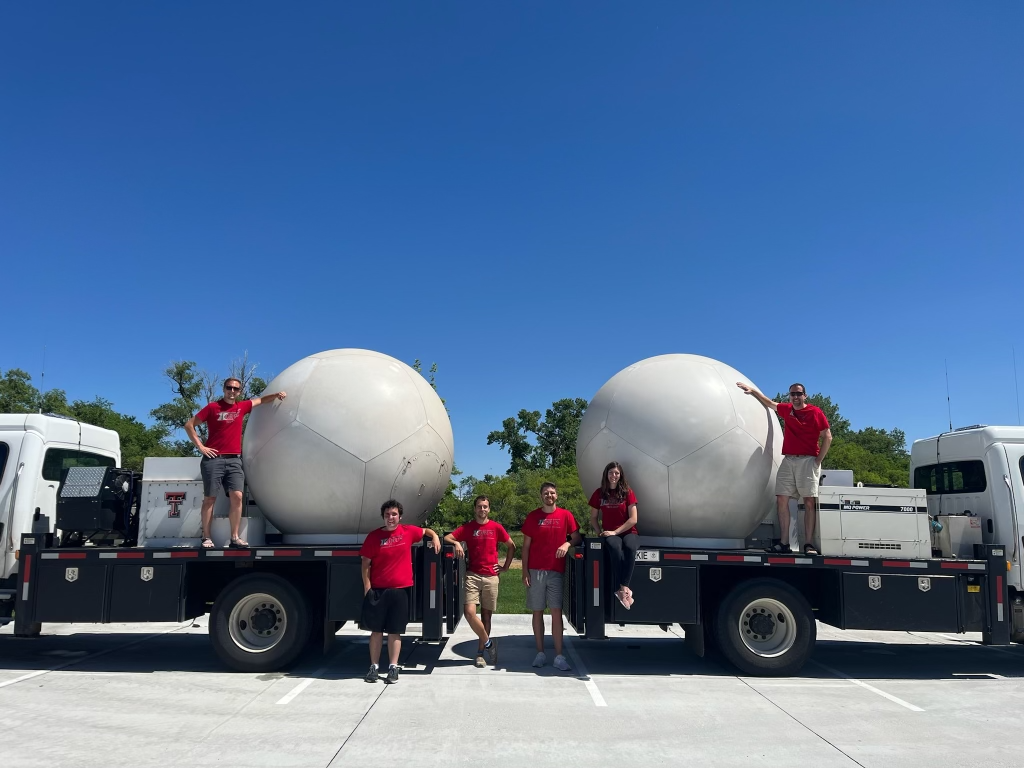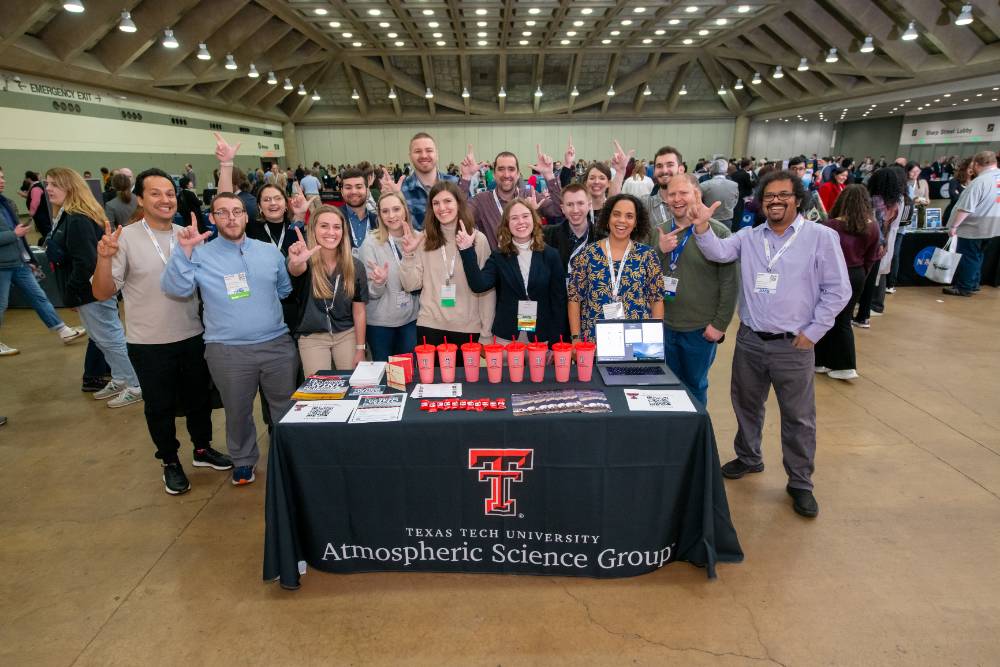Chris Weiss, NWI faculty member and professor in Atmospheric Science, highlights NWI’s unique tornado research assets.

Weiss (far left) with students showcasing TTU StickNets.
What do you think about when someone says they are a storm chaser? For many, the answer would be the 1996 thriller movie, Twister, where a rag-tag group of meteorologists perform groundbreaking tornado research, launching hundreds of sensors into a tornado to understand its dynamics. Even almost 30 years later, the movie (to an extent) still accurately depicts the innovative, high-intensity, and jaw-dropping research exercised today.
Chris Weiss, Professor of Atmospheric Science and NWI faculty member, is completing research that you would think should be in movies. The Michigan native started at Texas Tech in 2004 as an assistant professor and has been executing research ever since.
“It has just gotten bigger over the 20 years.”
Weiss and other NWI faculty members have developed a unique collection of platforms used for tornado research. One of the most well-known arrays of platforms created by TTU, and heavily used by Weiss' group, is called StickNet; [now] 48 rugged, rapidly deployable platforms decked out with instruments to measure surface-level details during tornadoes and other severe windstorms.
“That was the first time a Texas Tech University instrument array was brought out to the national scene for tornado genesis research.”
From its first large tornado project in 2009, StickNets and Weiss' group have traveled all over the United States, collecting crucial information from windstorms.
“The StickNet platforms are still the gold standard.”
The high-performing instrumentation on the StickNets is not the only thing that makes them unique; the ruggedness to withstand these high-end events without the constant need for physical monitoring allows for collecting data from portions of storms that are too dangerous for researchers to be located.

Weiss and students setting up a StickNet during a storm.
“[What makes us unique] is the type of observations that we are taking, we have some of the most unique tools.”
Weiss' group is collecting this unique data of portions of storms that may help research understand the dynamics of a tornado. If researchers understand the dynamics, they can identify what mechanisms produce a tornado.
“It is no secret, tornado warning false alarm rates are still around 75%.”
For the National Weather Service to issue a tornado warning, they usually need to see features in a storm, both in person and on radar, that would signify the development or presence of a tornado. The issue is that you may have one storm that produces an intense tornado, but an identical-looking storm may never produce one. Why this happens is still not fully understood, but it means that many tornado warnings with storms will never produce a tornado.
“If [the public] is bombarded with false warnings, people are less likely to take action and seek cover.”
Weiss considers better understanding why a tornado occurs, and thus improving the tornado warning accuracy, as utmost importance. His group is also attempting to solve these problems using high-resolution research radars.
“We are still unique in that nobody is using Ka-band radars like we are.”
He explained how the two custom mobile radars depict the key features surrounding supercell thunderstorms. In his current project, the resolution of the two radars allows one to look at features in the inflow layer that are less than 100 m tall. For a visual, those features would be short enough to fit in the Dallas Cowboy's AT&T Stadium. Weiss believes understanding these shallow layers may be the critical factor in knowing whether a tornado will form. The abilities of the Ka-radars provide a unique point of view that other radar systems cannot see.

Weiss (far right) and students with the Ka-radars.
Understanding the lowest layer is crucial, but it is theorized to look different based on its location within the United States.
“We are trying to understand what's different in Southeastern U.S. storm-scale dynamics, because there is a disproportionate loss of life in that region.”
Weiss explained that the number of strong tornadoes in the Southeast is growing every year. A project recently took place in this region, where several institutions worked together to understand these unique storms and why they are happening more frequently. Not only were researchers trying to understand the dynamics, but the social science and engineering elements were studied as well.
“We are going to see more need for the types of work that we do here at Texas Tech.”

Weiss and colleagues at the 2024 American Meteorological Society Conference.
NWI is unique as it is already well-versed in multidisciplinary studies, a relatively new concept to most. NWI prides itself in tying together the atmospheric, engineering, and social realms to accomplish world class research. Weiss describes that this dedication from NWI's members makes Texas Tech unique.
“It's all the aspects that make NWI so successful and will become even stronger in the decades to come.”
